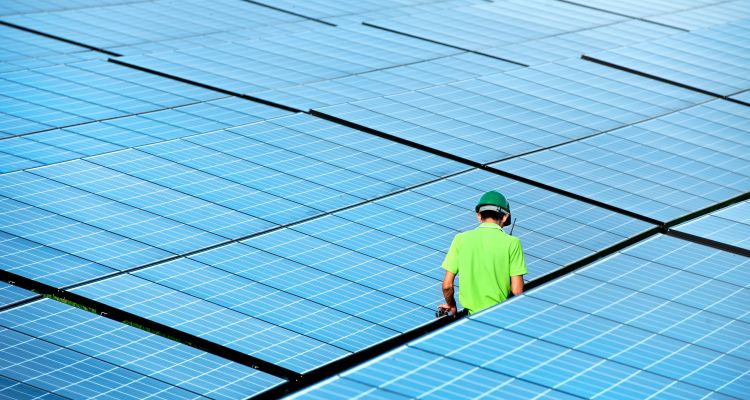Tasks Of The PV Entrepreneur: An Overview
When is commercial operation of a photovoltaic system the right option? Find out what you can expect as an operator, what you should keep in mind, and when looking for external support is worth it.
When you make a direct investment in a photovoltaic system you become an entrepreneur. While the solar system will be remunerated for twenty years, many system components last longer, with guarantees sometimes given for 25 or even 30 years.
Your task as entrepreneur is therefore to ensure the success of the investment for as long as possible. To do this, you need to have an eye on the future and keep the following areas of responsibility in mind:
Technical tasks
The technical goal is long-term, return-maximised operation with as few downtimes as possible. You can extend durability right from the start by taking technical precautions, for example protecting cables and plugs from UV radiation, and inverters from external influences.
In order to maintain high-level photovoltaic returns during operation, regular upkeep is essential. In addition to continuous monitoring, the equipment should be inspected on site at least twice a year. Defects can typically be remedied at much lower cost when detected at an early stage.
Careful documentation of the system construction is very important. This simplifies maintenance and speeds up repairs. It is also indispensable when making insurance claims or selling a system.
If something does break, the manufacturer’s service comes into play. Service-relevant decisions have already been made during the planning phase in terms of component selection. It is usually easier to obtain replacement components from larger manufacturers.
It is also beneficial to have technical contacts on site. Warranty claims are easier to make with companies based in Europe. Unlike other components, inverters typically need to be replaced at least once during their overall service life.
You can commission suitable service providers for technical management.
Commercial tasks
Above all, your commercial goal is maintaining the value of the system and maximising its return. It is fundamental to take all long-term costs and opportunities into account when calculating the return. This requires a realistic assessment of the system condition and the potential yield.
You can reduce the running costs of an old system from the start by checking whether the pricing in old contracts with technical managers is still in line with the market. You can reduce overpriced system insurance premiums by basing premiums on the low reinstallation value rather than the expensive original acquisition cost.
You should also review old financing conditions. Depending on the fixed interest period and repayment options, immediate refinancing can further reduce the running costs.
In preparation for cases of damage, you should build up liquidity and maintenance reserves. Check whether these are large enough immediately after purchasing an existing investment, in order to avoid the obligation to make additional contributions in the event of a loss. The maintenance reserve can be reduced if you take out inverter insurance.
If you are building up a larger portfolio of systems or are reluctant to deal with the commercial tasks yourself, it may make sense to hire commercial management.
Securing a long-term location
Considering the long-term nature of a PV investment, critical renovation cases, such as the replacement of a roof covering, should already be taken care of before purchase or start of construction. Cases such as these should be regulated in the lease contract, as installation and dismantling of a system, including the halt in operation, can be costly.
Good lease contracts include extension options beyond the EEG term. These are frequently excluded, so you should check the lease contract carefully before buying. Poor arrangements stipulate the dismantling of the system or even the transfer of the system to the lessor after the average useful life.
It is more difficult to retroactively change the contract, as you will then be in a weaker negotiating position. If a renewal period is still to be negotiated, you can propose percentage profit sharing. This way, the as of yet unknown actual revenue can be shared fairly.
After the remuneration period
As soon as the end of the EEG subsidy is in sight, you can think about repowering your PV plant. This can increase yields by replacing defective components with new, more powerful solar technology.
Whether or not continued operation after the EEG term is profitable depends on if you can find direct buyers for the electricity locally or if you must sell the electricity at a low exchange price. If the system can still be operated for another 10-15 years, even small differences in price will be stark.
In cases of rooftop systems, electricity can be sold directly to customers in the same building. For this option to work, the electricity demand must be in good proportion to the electricity production, and there must be a sufficiently high willingness to pay. This willingness might be low if, for example, electricity can instead be obtained under industry conditions.
This article was written with the support of Kai Howaldt, Managing Partner of Howaldt Energies.
To read the original article in German: Aufgaben als PV-Unternehmer.
This article was published in our investment guide. For all other articles and information on Direct investment in commercial-sized photovoltaic systems, please visit: Milk the Sun – PV Investment Guide.





